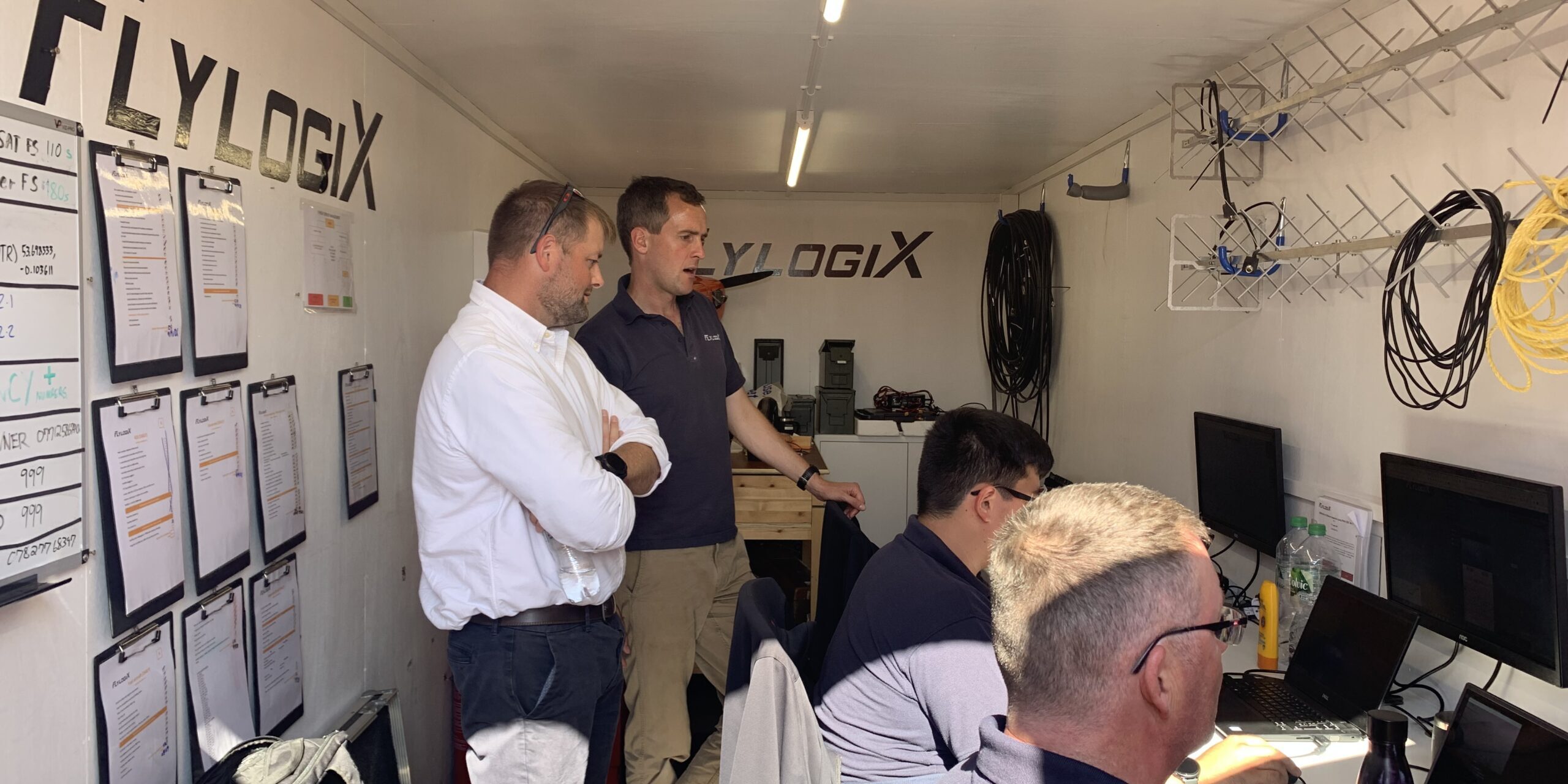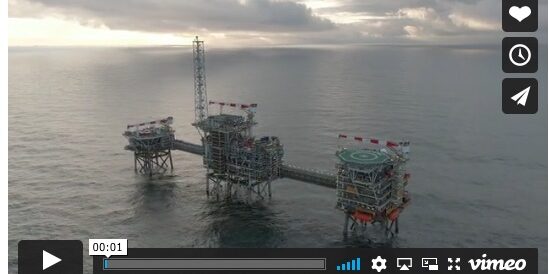Ed Clay, Flylogix Operations Director, on mission control.
In a remote location on the Norfolk coast, Ed Clay and his team are patiently waiting for the weather to improve. A hallmark of the Flylogix approach is to operate only within strict safety parameters. And it helps when their partners, offshore oil and gas companies, completely understand the temperamental nature of the weather.
As Ed explained from his base near Cromer “Unmanned aviation fits quite well with oil and gas – they understand that everything they do is limited by the weather. The North Sea is pretty hostile. It’s looking pretty hostile out the window at the moment. But oil and gas operators understand that there are operating conditions for a reason, and they’re there for safety, and you stick to them. So we fit together pretty well.”
”Unmanned aviation fits quite well with oil and gas – they understand that everything they do is limited by the weather
Ed ClayFlylogix Operations Director
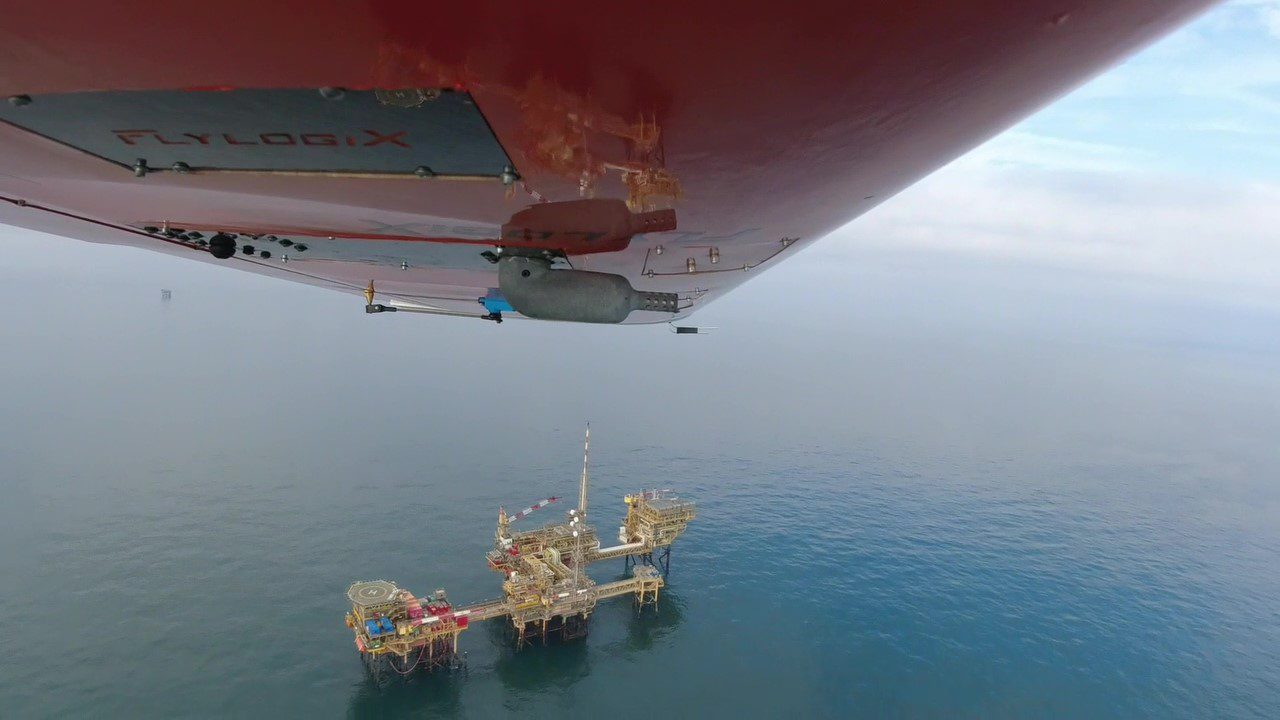
Flylogix UAV – on a mission Southern North Sea
Flylogix leaves nothing to chance
Safety and careful planning run through Flylogix like a stick of rock. And it’s that same rigorous approach that has enabled them to scale up operations and conduct over 12,500km of unmanned flights in the last year – the equivalent of flying the diameter of the earth.
So how have they made this happen? The team have refined their missions down to a seamless operation, through rigorous testing and planning.
“To get a Flylogix flight off the ground, there’s several elements we have to bring together.” says Ed “Firstly, getting kit and people to the right place. Then making sure we’re operating safely around the customer’s asset. That’s particularly important when we’re flying to an oil and gas asset as there are many variables to take into account. Finally, and vitally, there is ensuring the aviation side of the operation is safe and demonstrating that to others. It sounds complicated but we’re doing this so frequently now that it’s become a very smooth process.”
This smooth process involves getting two key approvals from the Civil Aviation Authority (CAA) for each mission – exemption and airspace. The exemption is to get permission to fly beyond visual line of sight.
“Ordinarily, you can’t just set off with your drone beyond the horizon. So we have to make a case to the CAA. Each case is location and job specific. But the more of these we do, the more we refine the process, and it’s obviously built on everything we’ve done before.”
The airspace requires a “temporary danger area” agreed with the CAA. This denotes where the UAV will be flying. Operations are considered safe if the aircraft stays within the parameters of the temporary danger area and no-one else comes in. And of course, Flylogix have protocols in place for when that does happen – for example if a search and rescue helicopter needed to enter the airspace.
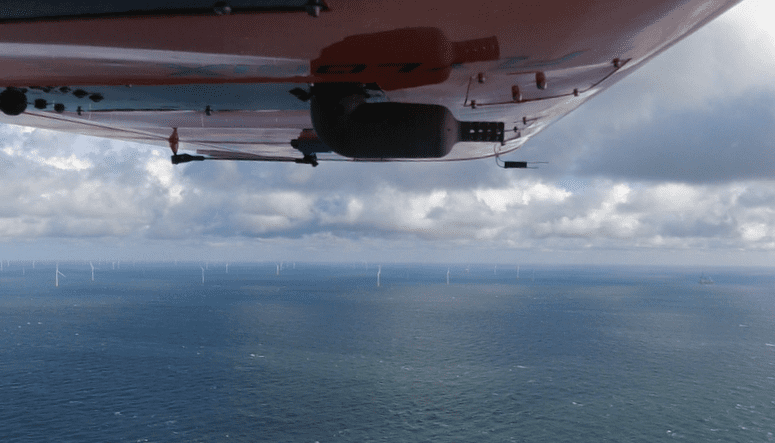
Flylogix UAV – Wind Farm Fly By in Southern North Sea
What it takes to get Flylogix UAVs off the ground
Each Flylogix mission needs a team of two. The UAV is delivered to the airfield in a container and prepared by the onsite team, but much of the operation is organised in advance. And this is the primary reason Flylogix have had so many successful flights. The limitations and parameters of safe flight are carefully calculated by the engineers prior to each mission, so nothing is left to chance.
Ed described his primary considerations when running an operation “We have three main considerations when we’re flying – are we in the temporary danger area? Is there anyone else there? And, is our aircraft performing like it’s supposed to? We monitor and guide the UAV in various ways to keep on top of these. We’re sending out and receiving data constantly, so we always know where the aircraft is, how it’s flying, and information about other aircraft in the vicinity.”
What adventurous stories can Flylogix tell about their missions?
“Engineers don’t do surprises” is how Ed describes the lack of wacky stories about Flylogix’s evolution. The thought and consideration behind each operation minimises all risks in advance. And the team don’t identify with the maverick inventor trope, simply because the risks and parameters of the technology and missions are so carefully calculated beforehand. Any other approach could compromise safety and be very costly.
As he explains “We actually try not to have stories. In the sense that everything we do is very carefully planned and controlled. Very little, if anything, is left to chance. And that might not be the headline-grabbing story of a bunch of maverick engineers, but that’s what’s making us successful.”
Few risks and no surprises. Tested and tough. And that’s why Flylogix always deliver.
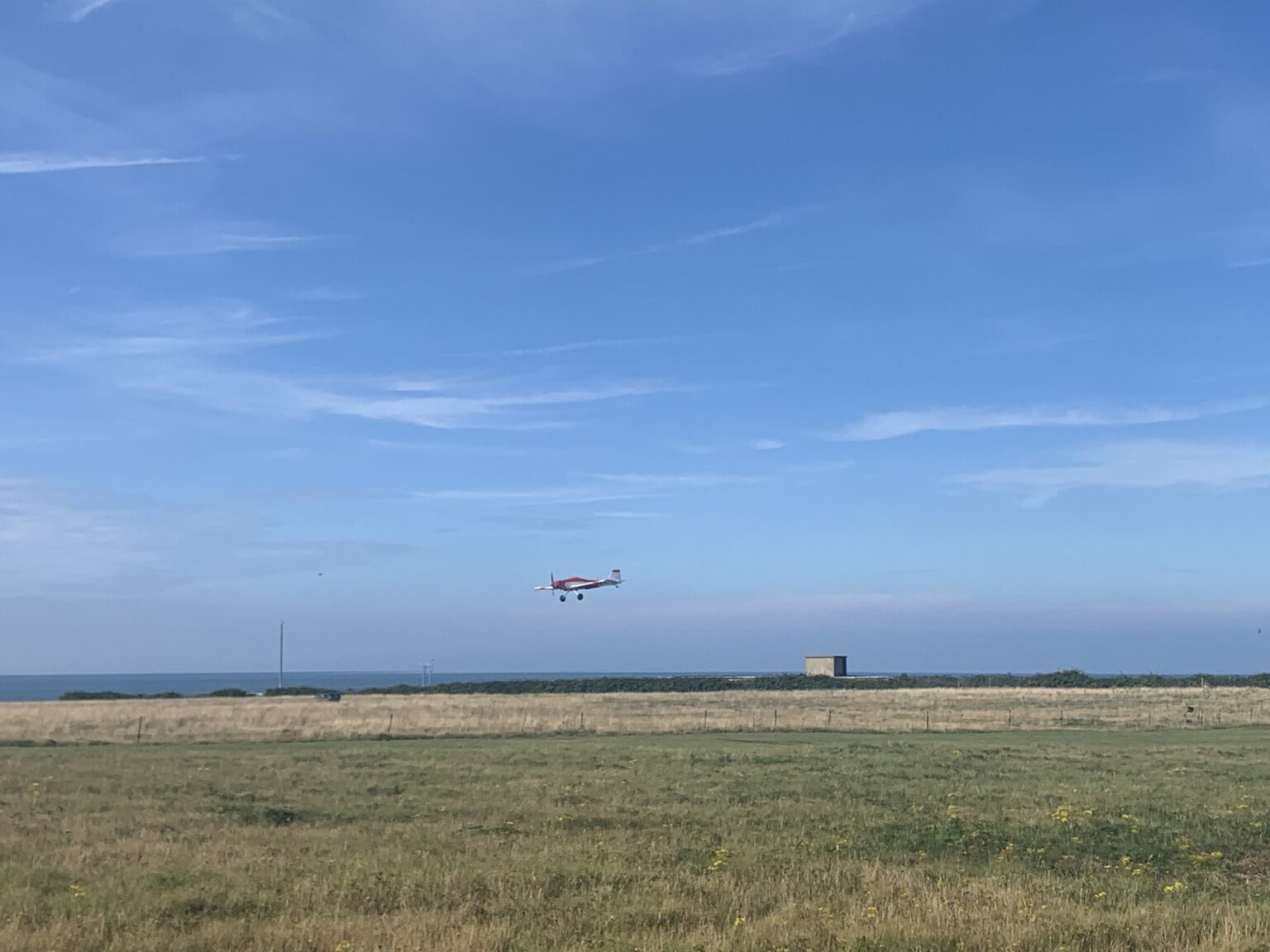
Flylogix – A Safe Landing


